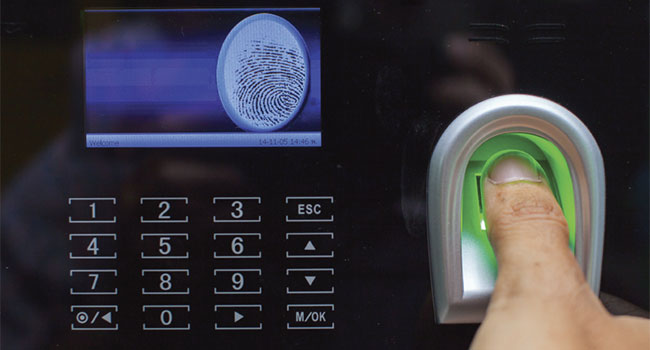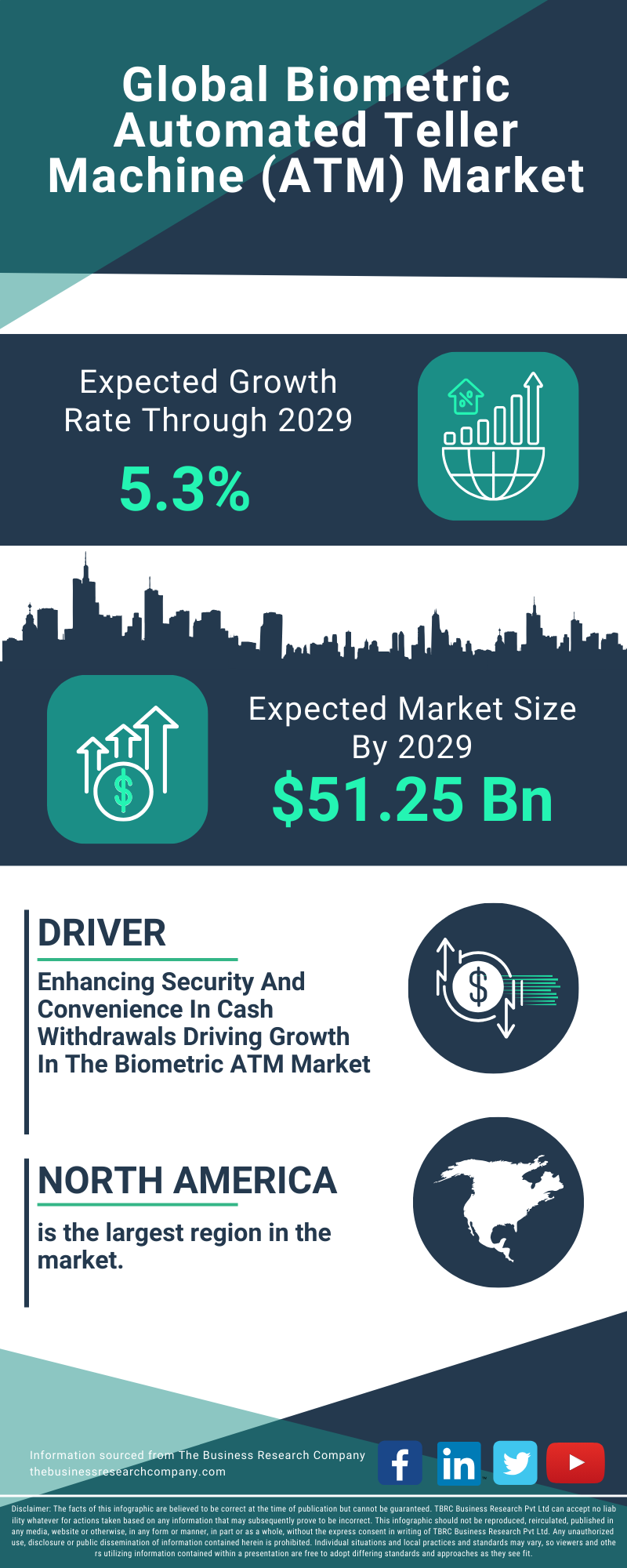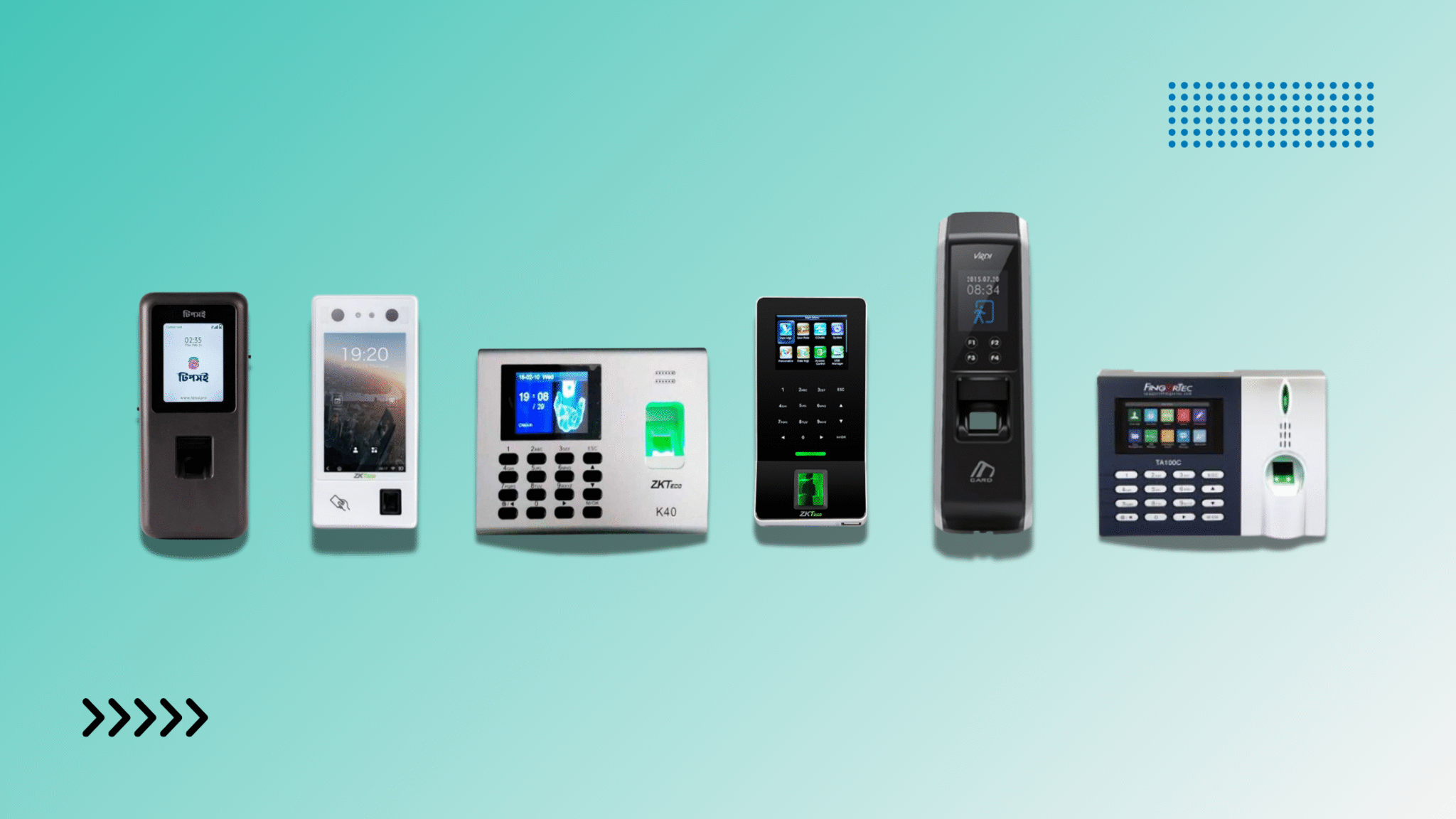Biometric ATM security is transforming banking in Bangladesh. It’s a new way to keep your money safe.
In recent years, Bangladesh has seen a rise in ATM-related fraud. Traditional PIN codes and passwords are no longer enough. People need better protection for their hard-earned money. This is where biometric security comes in. It uses unique body features like fingerprints or facial recognition.
These are much harder to fake or steal. Banks in Bangladesh are starting to adopt this technology. It promises greater security and peace of mind. Keep reading to learn how biometric ATM security works and why it’s becoming essential in Bangladesh.

Credit: securitytoday.com
Biometric Security Trends
Biometric ATM security is gaining traction in Bangladesh. This technology uses unique physical characteristics like fingerprints to secure transactions. The trends in biometric security are evolving rapidly, with both global and local implementations making significant impacts.
Global Adoption
Biometric security is becoming more popular worldwide. Many countries are adopting this technology for secure transactions. Here are some key trends:
- Fingerprint Recognition: Widely used for its accuracy and convenience.
- Facial Recognition: Increasingly integrated into ATMs for added security.
- Iris Scanning: Used in regions where high security is essential.
Several countries are leading in biometric ATM technology:
| Country | Technology Used |
|---|---|
| Japan | Fingerprint and palm vein scanning |
| USA | Facial and fingerprint recognition |
| India | Iris scanning and fingerprint recognition |
The global market for biometric ATMs is expected to grow. This is driven by the need for enhanced security and user convenience. Banks are investing in biometric technologies to combat fraud and improve customer experience.
Local Implementation
In Bangladesh, the implementation of biometric security in ATMs is still in its early stages. However, there are several initiatives and trends worth noting:
- Government Support: The government is encouraging banks to adopt biometric security.
- Bank Initiatives: Some banks have started pilot projects using fingerprint recognition.
- Consumer Awareness: Awareness campaigns are educating the public about the benefits of biometric security.
Challenges in local implementation include:
- Lack of infrastructure: Many rural areas still lack the necessary technology.
- Cost: High initial investment for banks to upgrade their systems.
- Privacy Concerns: Users are worried about the security of their biometric data.
Despite these challenges, the adoption of biometric security in ATMs is expected to grow. Banks are recognizing the importance of enhanced security and are likely to invest more in this technology. With government support and increasing consumer awareness, Bangladesh is poised to join the global trend of biometric ATM security.
Types Of Biometrics
Biometric ATM security in Bangladesh is becoming more popular. It ensures that only the account holder can access their money. Two common types of biometrics used are fingerprint scanning and iris recognition. Both offer unique benefits and high security.
Fingerprint Scanning
Fingerprint scanning is one of the most widely used biometric methods. It captures a person’s unique fingerprint pattern. ATMs equipped with fingerprint scanners provide a high level of security. This is how it works:
- The user places their finger on the scanner.
- The scanner captures the fingerprint image.
- The system compares the fingerprint with stored data.
- If it matches, the user gains access to their account.
Fingerprint scanning is popular for several reasons:
- Accuracy: Fingerprints are unique to each individual.
- Speed: Scanning and verification take only a few seconds.
- Convenience: Users do not need to remember passwords.
Here is a quick comparison table:
| Feature | Benefit |
|---|---|
| Accuracy | Highly accurate identification |
| Speed | Fast verification process |
| Convenience | No need for passwords or PINs |
Iris Recognition
Iris recognition is another advanced biometric method. It involves scanning the unique patterns of a person’s iris. The process is simple:
- The user looks into the iris scanner.
- The scanner captures an image of the iris.
- The system compares the iris pattern with stored data.
- If it matches, the user gains access to their account.
Iris recognition is known for its high security. Here are some key points:
- High Security: Iris patterns are highly unique and difficult to forge.
- Non-Invasive: The scanning process does not require physical contact.
- Reliability: Works well even if the user wears glasses or contact lenses.
A quick comparison table:
| Feature | Benefit |
|---|---|
| High Security | Very difficult to forge |
| Non-Invasive | No physical contact required |
| Reliability | Works with glasses or lenses |
Benefits Of Biometrics
Biometric ATM security is gaining popularity in Bangladesh. This advanced technology uses unique physical features, such as fingerprints, to verify a person’s identity. The benefits of biometrics are numerous. They enhance security, provide user convenience, and offer a reliable way to prevent fraud.
Enhanced Security
Biometric ATMs provide enhanced security by using unique physical traits to verify identities. Traditional PINs and passwords can be stolen or forgotten. But biometric data is difficult to fake or steal. This makes ATMs more secure.
- Fingerprint Recognition: Scans the user’s fingerprint to grant access. Hard to replicate.
- Face Recognition: Uses facial features to verify identity. Provides an extra layer of security.
- Iris Scanning: Reads the unique patterns in a person’s eye. Highly accurate and secure.
Biometric data is stored securely. It’s encrypted and protected from unauthorized access. This reduces the risk of identity theft and fraud.
Here’s a comparison of traditional vs. biometric security:
| Traditional Security | Biometric Security |
|---|---|
| PIN/Password | Fingerprint, Face, or Iris |
| Can be stolen or forgotten | Unique and hard to replicate |
| Lower security level | Higher security level |
In Bangladesh, using biometrics in ATMs enhances security and protects users’ money.
User Convenience
Biometric ATMs offer great user convenience. Users don’t need to remember PINs or passwords. Their unique physical traits are enough to access their accounts.
- No Need for Cards: Users can access ATMs without carrying a card. Just their fingerprint or face is needed.
- Quick Transactions: Biometric verification is fast. It saves time compared to entering PINs or passwords.
- Easy to Use: Simple and intuitive process. Users just need to place their finger or look at the camera.
Biometric ATMs also help people who struggle with traditional methods. Elderly users or those with memory issues find it easier to use biometrics. They don’t have to worry about forgetting their PINs.
Here’s a quick look at the convenience features:
| Feature | Benefit |
|---|---|
| No cards needed | Reduces the risk of losing or forgetting cards |
| Quick verification | Saves time during transactions |
| Easy to use | Accessible for all age groups |
In Bangladesh, biometric ATMs provide a seamless and secure banking experience. Users enjoy the convenience and peace of mind that their accounts are protected.

Credit: market.us
Challenges Faced
Biometric ATM security in Bangladesh presents a promising future in safeguarding financial transactions. Despite its potential, several challenges hinder its widespread adoption. Understanding these obstacles is crucial for stakeholders to develop effective solutions. Below are some of the significant challenges faced.
Technical Limitations
Implementing biometric ATM security involves various technical challenges. These limitations can affect the performance and reliability of biometric systems.
High Cost of Implementation: Installing biometric systems in ATMs can be expensive. This includes the cost of hardware, software, and regular maintenance.
Hardware Issues: Biometric sensors can face wear and tear due to constant use. Environmental factors like dust and moisture can also affect their performance. This can lead to frequent malfunctions.
Software Compatibility: Ensuring that biometric software integrates seamlessly with existing banking systems is complex. Different banks use different software systems, making integration a challenging task.
| Technical Challenge | Description |
|---|---|
| High Cost | Expensive hardware and software installation |
| Hardware Issues | Sensors affected by wear, tear, and environmental factors |
| Software Compatibility | Complex integration with existing banking systems |
Scalability Concerns: Deploying biometric ATMs across a large network can be challenging. Different regions may require different configurations, adding to the complexity.
Public Acceptance
Public acceptance is another significant challenge for biometric ATM security in Bangladesh. Several factors influence the public’s willingness to adopt this technology.
Privacy Concerns: Many people are concerned about their biometric data being stored and used. They fear that their personal information might be misused or hacked.
Lack of Awareness: People may not understand how biometric systems work. They might be unaware of the benefits, leading to resistance to change.
- Trust Issues: People need to trust that their data is secure. Banks must educate the public about security measures in place.
- Cultural Factors: Cultural beliefs and practices can influence acceptance. In some communities, using biometric systems might be seen as intrusive.
User Experience: If the biometric system is not user-friendly, people may avoid using it. The system must be easy to use and efficient to gain public trust.
Educational Campaigns: Banks and financial institutions need to run educational campaigns. They should inform the public about the safety and benefits of biometric ATMs. This can help in building trust and acceptance.
Regulatory Landscape
Biometric ATM security is emerging as a key player in Bangladesh’s financial sector. This technology is transforming the way people access their funds. The regulatory landscape in Bangladesh is evolving to ensure these systems are secure and trustworthy. Understanding the regulatory framework is vital for banks and financial institutions. Let’s delve into the key aspects of government policies and compliance requirements in this domain.
Government Policies
The government of Bangladesh is taking significant steps to enhance ATM security. Several policies have been introduced to regulate the use of biometric systems. These policies aim to protect consumer data and ensure the integrity of financial transactions.
Key government policies include:
- Data Protection Act: This act mandates that all financial institutions must secure customer data. It includes specific guidelines for handling biometric data.
- Banking Security Regulations: Banks are required to implement advanced security measures, including biometric verification, to safeguard ATM transactions.
- National Identification Integration: The integration of biometric data with the national ID system is a priority. This ensures a unified approach to identity verification.
These policies are designed to create a robust security environment. They ensure that financial institutions follow best practices in data security. Additionally, the government conducts regular audits to ensure compliance. This proactive approach helps in mitigating security risks and protecting consumer interests.
Compliance Requirements
Compliance with regulatory requirements is essential for financial institutions. In Bangladesh, banks must adhere to several compliance standards for biometric ATM security.
Key compliance requirements include:
- Data Encryption: All biometric data must be encrypted during storage and transmission. This prevents unauthorized access to sensitive information.
- Regular Audits: Banks must undergo regular security audits. These audits check for adherence to regulatory standards and identify potential vulnerabilities.
- User Consent: Financial institutions must obtain explicit consent from users before collecting biometric data. This ensures transparency and builds trust.
Compliance with these requirements is monitored by regulatory bodies. Non-compliance can result in severe penalties. Financial institutions are encouraged to stay updated with the latest regulations. This ensures that they maintain high security standards and protect customer data effectively.
Here is a summary table of key compliance requirements:
| Requirement | Description | Importance |
|---|---|---|
| Data Encryption | Encrypt biometric data in storage and transit | High |
| Regular Audits | Conduct periodic security audits | High |
| User Consent | Obtain user consent for data collection | Medium |
Meeting these compliance requirements ensures that banks can provide secure and reliable biometric ATM services. It helps in building consumer confidence and promoting the adoption of advanced security technologies.

Credit: www.thebusinessresearchcompany.com
Case Studies
Biometric ATM security is gaining traction in Bangladesh. Banks are adopting these systems to enhance security and reduce fraud. Case studies provide valuable insights into the success and challenges faced during implementation.
Successful Implementations
Several banks in Bangladesh have successfully implemented biometric ATM security. These banks report a significant reduction in fraud and an increase in customer trust. Here are some examples:
- Bank A: Implemented fingerprint recognition in 2019. Fraud cases dropped by 50% within the first year.
- Bank B: Launched iris scanning ATMs in 2020. Customer satisfaction surveys showed a 30% increase in trust.
- Bank C: Adopted facial recognition technology in 2021. Reduced unauthorized access by 40%.
Table showing key metrics before and after implementation:
| Bank | Technology | Year | Fraud Reduction | Customer Trust Increase |
|---|---|---|---|---|
| Bank A | Fingerprint | 2019 | 50% | 20% |
| Bank B | Iris | 2020 | 60% | 30% |
| Bank C | Facial | 2021 | 40% | 25% |
These implementations highlight the effectiveness of biometric security in ATMs. Customers feel safer, and banks see fewer fraud cases.
Lessons Learned
Implementing biometric ATM security in Bangladesh has offered several lessons:
- Public Awareness: Educating customers is crucial. Many users are unfamiliar with biometric technology. Banks must run awareness campaigns.
- System Integration: Integrating biometric systems with existing infrastructure can be challenging. Banks need skilled IT teams for seamless integration.
- Maintenance: Regular maintenance is essential. Biometric systems require frequent updates and checks to function correctly.
- Privacy Concerns: Addressing privacy concerns is vital. Customers need assurance that their biometric data is secure and not misused.
Table summarizing key challenges and solutions:
| Challenge | Solution |
|---|---|
| Public Awareness | Run educational campaigns |
| System Integration | Hire skilled IT professionals |
| Maintenance | Schedule regular updates and checks |
| Privacy Concerns | Ensure data security measures |
These lessons help banks in Bangladesh improve their biometric ATM security. Understanding these challenges ensures smoother implementation and better customer experience.
Future Of Atm Security
Bangladesh is rapidly advancing in the field of ATM security. The future of ATM security is focusing on biometric technology, which promises to enhance safety and convenience. This shift aims to address the growing concerns over ATM fraud and unauthorized access, ensuring a more secure banking environment for everyone.
Emerging Technologies
Biometric ATM security in Bangladesh is leveraging emerging technologies to secure transactions. These technologies include:
- Fingerprint Recognition: ATMs equipped with fingerprint scanners ensure that only the account holder can access the account. This method is reliable and difficult to forge.
- Facial Recognition: This technology uses cameras to scan and verify the user’s face. It adds an extra layer of security, reducing the risk of fraud.
- Voice Recognition: Voice recognition systems authenticate users by analyzing their unique voice patterns. It offers a hands-free and convenient way to access ATMs.
- Iris Scanning: Iris scanners capture the unique patterns in the user’s eye. This method is highly accurate and secure.
These technologies are not only enhancing security but also improving user experience. They reduce the need for physical cards and PINs, making transactions faster and more secure.
Predicted Trends
The future of ATM security in Bangladesh is shaped by several predicted trends:
- Increased Adoption of Biometrics: More banks will integrate biometric systems into their ATMs. This will become a standard practice, ensuring higher security for customers.
- Integration with Mobile Devices: ATMs will sync with mobile devices for authentication. Users will be able to use their smartphones for biometric verification, making the process seamless.
- AI and Machine Learning: AI will enhance biometric systems by learning and adapting to new fraud tactics. Machine learning algorithms will detect unusual patterns and prevent fraudulent activities.
- Contactless Transactions: The trend of contactless transactions will grow. Users will perform transactions without touching the ATM, reducing the spread of germs and enhancing hygiene.
- Blockchain Technology: Blockchain will play a role in securing transactions. It will provide a tamper-proof record of all transactions, ensuring transparency and security.
These trends indicate a move towards more secure, efficient, and user-friendly ATM systems. The focus will be on providing a safe banking experience while incorporating the latest technologies.
Consumer Awareness
Biometric ATM security is gaining attention in Bangladesh. This technology uses unique biological traits like fingerprints or facial recognition for secure banking. But for this system to succeed, consumer awareness is crucial. Educating the public about its benefits and safety can encourage widespread adoption.
Educational Initiatives
Educational initiatives play a key role in raising consumer awareness. Banks and financial institutions can lead the way by offering workshops and seminars. These events can explain how biometric security works and its advantages.
Consider these methods for effective education:
- Workshops: Organize sessions in urban and rural areas to reach a wide audience.
- Seminars: Invite experts to speak about the technology and its impact on security.
- Online Courses: Provide free, easily accessible courses for the tech-savvy population.
Collaborations with educational institutions can also be beneficial. Schools and universities can include biometric security in their curriculum. This approach ensures that the younger generation grows up understanding this technology.
Here is a simple table highlighting key points:
| Method | Target Audience | Benefits |
|---|---|---|
| Workshops | General Public | Hands-on experience |
| Seminars | Professionals | Expert Insights |
| Online Courses | Youth and Tech-savvy | Easy Access |
Community Engagement
Community engagement is another vital aspect of increasing consumer awareness. Local communities can be powerful advocates for biometric ATM security.
Several strategies can help engage communities effectively:
- Local Leaders: Involve local leaders to spread the word. People trust community leaders and are more likely to listen to them.
- Town Hall Meetings: Organize meetings where residents can ask questions and express concerns.
- Flyers and Posters: Distribute informational materials in local languages to ensure everyone understands.
Partnering with community organizations can also be useful. These groups often have established trust and can help disseminate information more effectively.
A few engagement tactics summarized:
| Strategy | Action | Outcome |
|---|---|---|
| Local Leaders | Involvement | Increased Trust |
| Town Hall Meetings | Open Discussions | Addressed Concerns |
| Flyers and Posters | Distribution | Widespread Awareness |
By combining educational initiatives with community engagement, Bangladesh can build a well-informed public. This approach will help ensure the successful adoption of biometric ATM security.
Frequently Asked Questions
What Is Biometric Atm Security?
Biometric ATM security uses unique biological traits for authentication. It can include fingerprints, iris scans, or facial recognition. This technology enhances security and reduces fraud.
How Does Biometric Atm Security Work?
Biometric ATM security works by scanning and verifying a user’s biometric data. The system matches this data with stored records. If it matches, the transaction is authorized.
Why Is Biometric Atm Security Important?
Biometric ATM security is important because it significantly reduces fraud. It ensures that only the account holder can access their funds. This enhances overall banking security.
What Are The Benefits Of Biometric Atms?
Biometric ATMs offer enhanced security and reduce fraud. They provide quick and convenient access to funds. They also eliminate the need for PINs.
Conclusion
Biometric ATM security in Bangladesh offers enhanced protection for users. This technology reduces fraud risks significantly. People feel safer using ATMs with biometric features. Banks gain trust from their customers. Implementing this system shows progress in financial security. It brings peace of mind to everyone involved.
Adopting biometric security is a smart move for Bangladesh. Future improvements will make it even more secure. Embrace this change for safer transactions.








